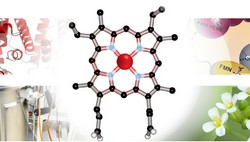Nature's enzymes for industrial chemical production
Selective oxidation reactions using biocatalysts could be one of the most industrially important transformations. Currently, these reactions require highly reactive and expensive oxygen transfer agents (catalysts) that often display poor selectivity. Nature's oxygenases such as cytochrome P450 monooxygenase has both high activity and good selectivity, leading to high-value compounds that are difficult, if not impossible, to produce with conventional chemical routes. The training network supported with EU funding of the P4FIFTY(opens in new window) (Development of cytochrome P450 enzymes for the chemical manufacturing industries) project intended to provide a step-change in the realisation of P450 potential for green oxidation chemistry. The goal was to enable one-step synthesis of complex molecules for applications in the pharmaceutical, flavours and fragrances, and fine chemicals industries. International experts mentored and supervised research fellows and experienced researchers were trained on the application of enzymes for industrial processes. Hands-on training was complemented by a variety of 'masterclass' workshops, courses and seminars and a strong industrial training element. Researchers also attended numerous international meetings and participated in international conferences and outreach activities, including lectures to schoolchildren at a Summer School of Chemistry. P4FIFTY members discovered novel enzymes from several plant varieties and successfully enhanced enzyme activity and selectivity using protein fusion and enzyme engineering. In particular, a P450 from Arabidopsis demonstrated a role in TNT tolerance in plants that could be used for phytoremediation of contaminated soil. The team also developed new high throughput screening techniques such as colorimetric assays and contributed to improvements in bioinformatics and process engineering. For instance, they updated the P450 engineering database (CYPED v6.0) that was used for improvement of P450 properties for better synthesis. P450s can catalyse a wide variety of industrially relevant reactions and do so better, cheaper and without harsh chemicals compared to conventional chemical routes. P4FIFTY activities have helped create a trans-European network of industrially-oriented biotechnologists to advance the chemical manufacturing and pharmaceutical industries in Europe. This should stimulate new applications and the development of new processes, strengthening the EU economy in a field of growing importance.







